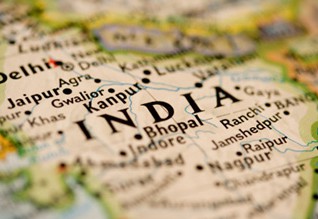
L’Europe n’est pas seule à connaitre une poussé très forte des Compagnies low cost :
INDIAN LCCS TAKE PRICE WAR TO OVERSEAS ROUTES
August 29, 2011
Indian full service airlines, buffeted by high fuel costs and intense competition, face new headwinds on their lucrative international routes as budget carriers launch services with rock-bottom fares.
With low-cost carriers launching routes using narrow-body aircraft to overseas destinations within five hours flying time of India, full-service players are being forced to respond with similar no-frills offerings on popular and profitable routes.
Budget airline IndiGo, which in June firmed up a USD$16.2 billion order for 180 single-aisle Airbus aircraft, has received government approval to fly to Singapore, Bangkok, Dubai and Muscat, and is luring passengers with round-trip fares as low as INR9,999 rupees (USD$220).
By comparison, full service carriers charge between INR17,000 and INR22,000 rupees for economy class Mumbai-Singapore routes booked a month in advance.
« The entry of IndiGo will help in growing the market. Low cost carriers are creating a new market with a new breed of customers who did not fly international earlier, » said Kapil Kaul, chief executive for the Indian subcontinent and Middle East at the Centre for Asia Pacific Aviation (CAPA).
Under Indian aviation laws, an airline needs to locally operate for five years before being assigned overseas routes.
Indian low-cost operator SpiceJet, with just six international flights now among its 200 daily flights, plans to expand its overseas network and has applied for several international routes, CEO Neil Mills said.
« Low cost carriers are much better poised to take advantage of the growth, because India is a very price-sensitive market, » Mills told reporters.
Full-service carriers Jet, Air India and Kingfisher Airlines already compete on regional international flights with foreign full-service rivals such as Emirates, Thai Airways, Singapore Airlines and Cathay Pacific.
Low-cost carriers already flying international routes to India include Malaysia’s AirAsia as well as flydubai and Air Arabia, both based in the United Arab Emirates. Singapore Airlines also plans a low-cost carrier.
AirAsia, which in June announced a record aircraft order worth USD$18.2 billion, is expected to use much of its new fleet to link Southeast Asia to India and China.
Asia is expected to account for more than half of global airline profits this year, according to the International Air Transport Association.
FULL SERVICE, LOW FARES
Jet Airways, India’s biggest carrier by market share, said it plans to introduce more low fare flights on shorter international routes to take on emerging rivals such as IndiGo and SpiceJet.
« Globally the push towards low-cost is real, » said Sudheer Raghavan, chief commercial officer at Jet. « We will use the narrow bodied aircraft for low fare routes, » Raghavan said, referring to international routes less than five hours.
Lucrative international routes have helped Indian carriers offset often loss-making domestic routes.
Jet’s average revenue per passenger in April-June was USD$112 for domestic operations, compared with about USD$275 for international operations, which account for more than half its revenue.
Low-cost domestic competition from Spicejet, IndiGo, and GoAir has forced full service carriers Jet and Kingfisher to ramp-up no-frills offerings. In exchange for low fares, passengers pay for their meals, go without perks such as seat-back video monitors, and often get less leg space.
Struggling state-run Air India, meanwhile, has slashed fares in recent months in order to arrest falling market share, adding to price competition.
Nearly three out of four tickets Jet sells locally is in the low cost segment, while Kingfisher Airlines is expanding domestic connectivity under its low fare brand Kingfisher Red.
(Reuters)
